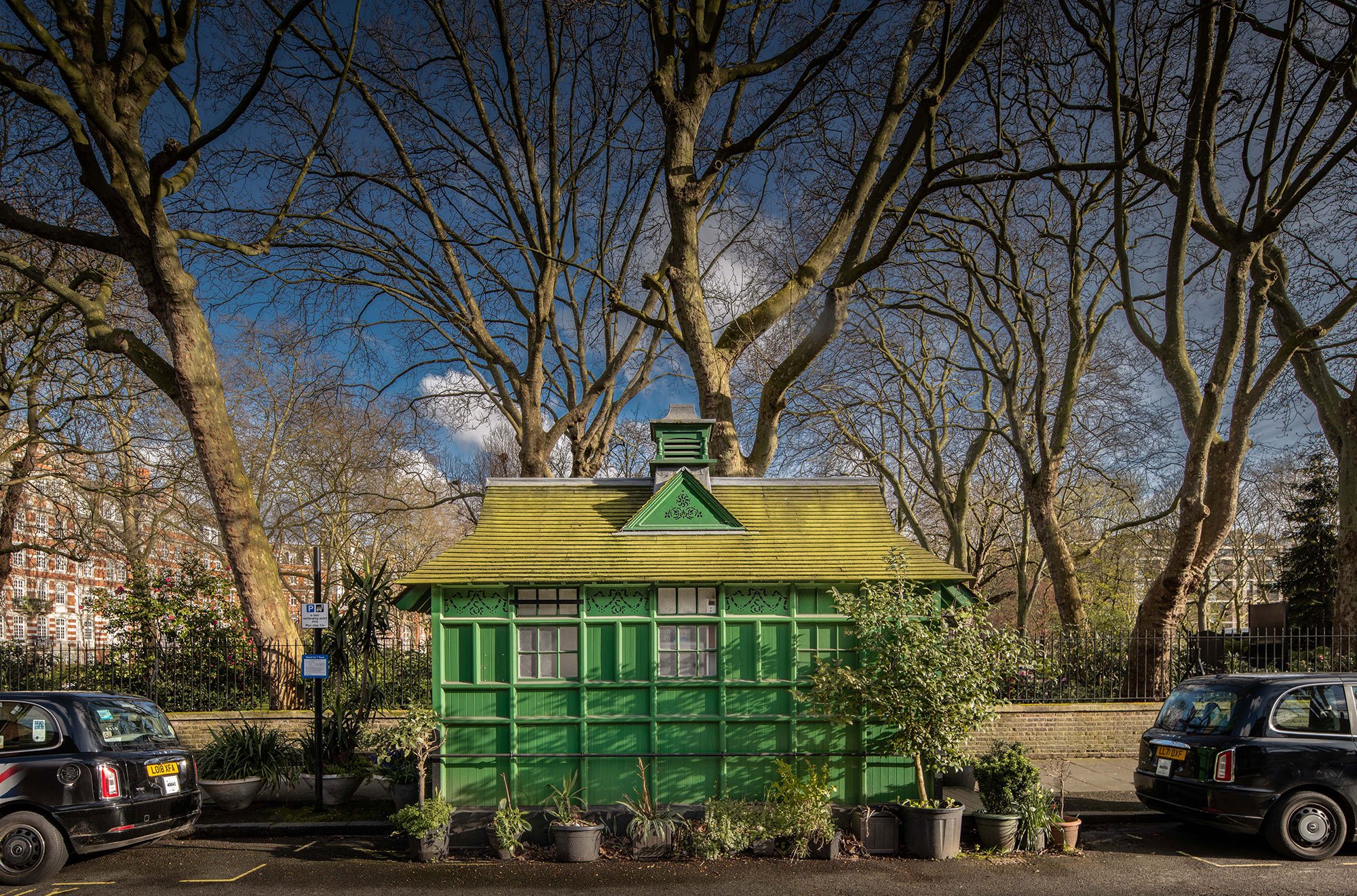13th Cabmen's Shelter in London Listed
The picturesque green cabmen's shelter on Wellington Place in St John’s Wood, London has been listed at Grade II by the Department for Culture, Media and Sport (DCMS) on the advice of Historic England.
Known locally as 'The Chapel' shelter it is the final example in the capital to be protected by listing.
The wooden huts were built by the Cabmen's Shelter Fund as much-needed rest stops for licenced cab drivers, at a time when cabs were all horse-drawn.
The first cabmen’s shelter in London was built in 1875. Only 13 of these shelters survive in the city today and they are now all protected as listed buildings, recognising their architectural and historic importance.
The small, distinctive buildings continue to serve modern-day taxi drivers and are still overseen by the Cabmen’s Shelter Fund, which celebrates its 150th anniversary in 2025.
Only drivers with 'The Knowledge' can take a seat inside but many huts offer takeaway refreshments to the public too.
Full of intrigue, history, tea and bacon sarnies, London’s cabmen’s shelters are distinctive relics of the horse-drawn age.
They are one of the few reminders left on London’s streets of the prevalence of the horse-drawn hansom cab trade in the 19th century. At the peak of their popularity there were thousands of hansom cabs in the capital. The last hansom cab driver in London stopped operating in 1947.
The familiar size, shape and colour helped cabbies spot the shelters easily. They are all the same proportions – no bigger than a horse and cart as they were on a public highway.
Designs varied over time but the most recognisable 'ornamental' version we see today was the work of architect Maximillian Clarke. The letters CSF for Cabmen’s Shelter Fund can often be found in the decorative fretwork. There’s even an official cabmen’s shelter paint colour – Dulux Buckingham Paradise 1 Green.
All 13 shelters were restored in a campaign by Heritage of London Trust during the 1980s and 1990s. Heritage of London Trust most recently supported the repair of 'The Pier' shelter on Chelsea Embankment by Albert Bridge in 2022.
We’re really pleased that the Wellington Place shelter now has protected status, along with all the other remaining shelters. We know how special the shelters are but we need the London taxi trade and public’s support more than ever so that this important part of our heritage and working class history lives on.
A brief history of cabmen’s shelters
In Victorian London cabmen were prohibited by law from leaving their cabs unattended in the rank. While on the job there was no protection from the elements, access to hot food or a place to rest. This led many drivers to stop at a pub between fares. They also had to pay someone to look after their cab or risk it being stolen. Stopping for shelter at a pub tempted some cabmen to drink too much, risking their own safety and that of their passengers.
The idea of providing shelters on the ranks was first conceived by Captain George C Armstrong, editor of The Globe newspaper. When Armstrong was unable to get a cab during a storm because the drivers had all sought refuge in local pubs, he decided to band together a group of wealthy and influential philanthropists to provide a solution. He helped establish the Cabmen’s Shelter Fund in London in 1875 with the 7th Earl of Shaftesbury, providing warm and dry rest stops at ranks along many major thoroughfares across the city. The charity still operates today.
Between 1875 and 1950 sixty-one shelters are known to have been built across London. The first shelter was moveable and was erected in February 1875 on Acacia Road in St John’s Wood, outside Armstrong’s home.
The shelters had a small kitchen and space for around 10 drivers to sit, enjoy a meal and each other’s company. Gambling, drinking and swearing were strictly forbidden.
Share your pictures, memories or local knowledge of London’s cabmen’s shelters
We’re inviting everyone to help reveal a more complete picture by taking part in the Missing Pieces Project.
We’d love for you to add your photos, memories or local knowledge to the list entries for London's cabmen's shelters.
Just select one of the shelters from the list below, and sign in to add pictures, stories, scanned documents and more. Every family memory and community event, every phone snap and newspaper clipping, is an essential part of the story of a place – a piece that was missing until you got involved.
13 Historic Cabmen’s Shelters in London:
- Chelsea Embankment SW3
- Embankment Place WC2
- Grosvenor Gardens SW1
- Hanover Square W1
- Kensington Park Road W11
- Kensington Road W8
- Pont Street SW1
- Russell Square WC1
- St. George's Square SW1
- Temple Place WC2
- Thurloe Place SW7
- Warwick Avenue W9
- Wellington Place NW8





